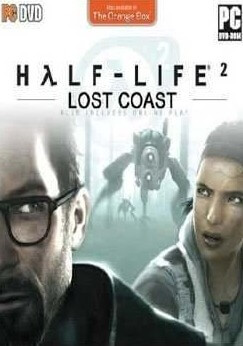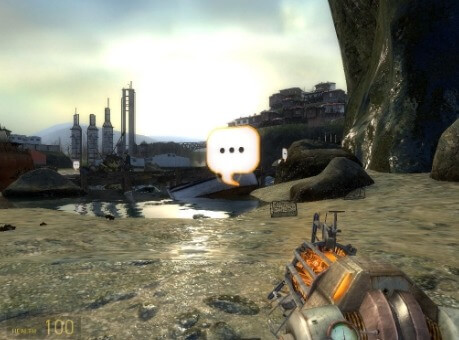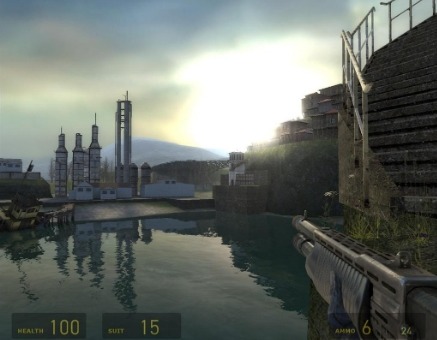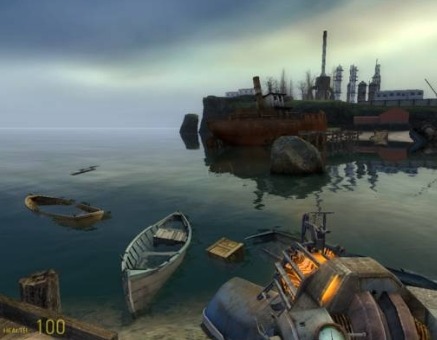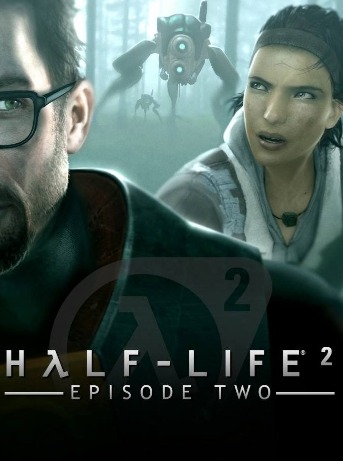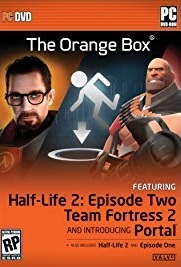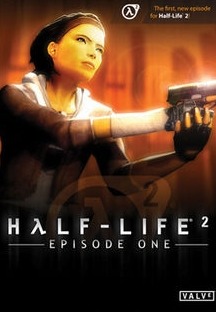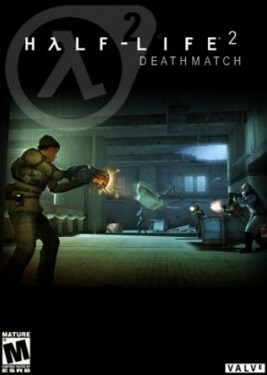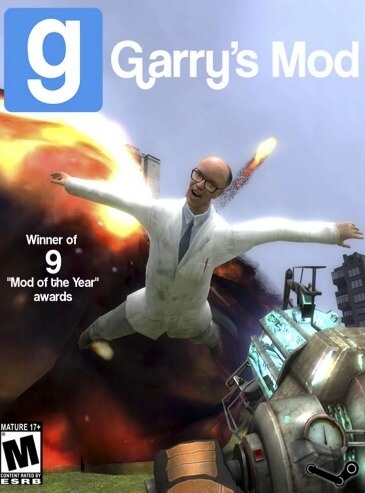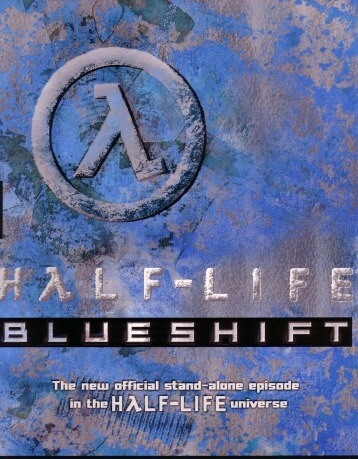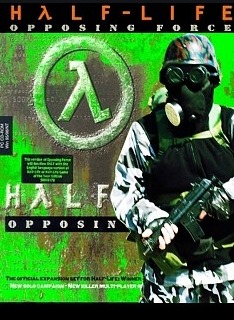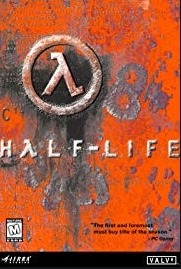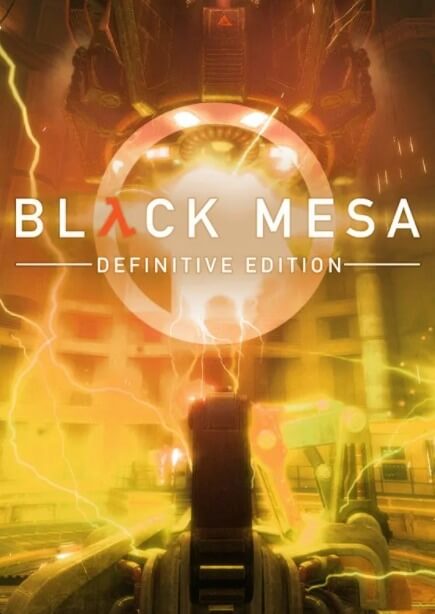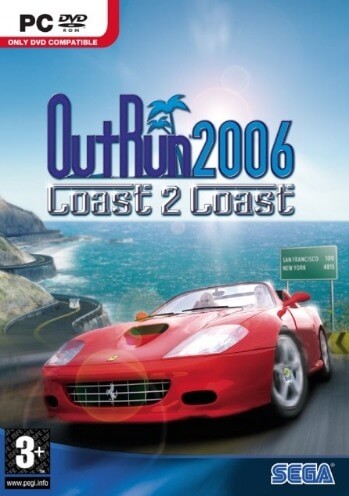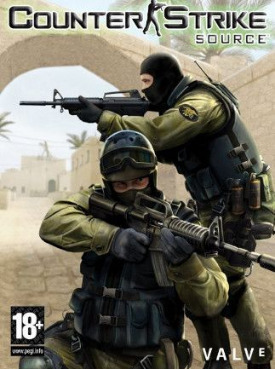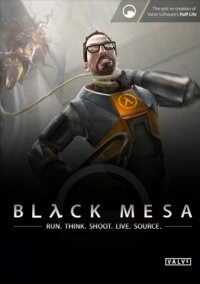Half-Life 2: Lost Coast (stylized as HλLF-LIFE2: LOST COAST) is an additional level for the 2004 first-person shooter video game Half-Life 2. Developed by Valve Corporation, it was released on October 27, 2005, through the Steam content delivery service as a free download to owners of the Microsoft Windows version of Half-Life 2. Lost Coast serves as a technology demonstration, specifically showcasing the high-dynamic-range rendering implemented in the Source engine. The level was designed with a variety of appropriate environments to emphasize these effects. Lost Coast was the first video game developed by Valve to allow developers to explain various elements of design as the player progresses through the level.
Lost Coast follows Half-Life protagonist Gordon Freeman as he travels up a coastal cliff to destroy a Combine headcrab artillery launcher in a monastery, which is firing on a nearby town, Saint Olga. The Lost Coast level was initially created for Half-Life 2, but was ultimately removed from the game. As a result, it has several minor story details that were not included in Half-Life 2. The level received a generally positive reception, and there was consensus among reviewers that the new features included in Lost Coast should be integrated into future games released by Valve.
Gameplay
Lost Coast uses the same first-person shooter gameplay mechanics as Half-Life 2. The game is viewed from the perspective of the player character, and plot information is imparted through scripted sequences rather than cutscenes. A heads-up display at the bottom of the screen shows the player's health, energy gauge, and ammunition status, while available weapons are shown at the top. Health and armor energy can be replenished by picking up medical supplies and energy cells respectively, or by using wall-mounted charging devices. The player character is equipped with a small armory of weapons from Half-Life 2 at the beginning of the level, including a pistol, shotgun, crossbow, and gravity gun. The gravity gun allows the player to manipulate physical objects in the world; it can be used to pick up nearby objects and throw them at enemies or create cover from enemy fire. The gravity gun can also be used to perform several non-combat functions, such as grabbing out-of-reach supply crates.
Story
Half-Life 2: Lost Coast opens with the protagonist, Gordon Freeman, finding himself near a group of decaying piers, underneath a monastery set up on rocks and overlooking the small town of St. Olga. A fisherman recognizes Gordon and directs him to the monastery, which the enemy Combine are using as a platform to launch artillery shells filled with headcrabs into the town. The fisherman opens a gate, allowing the player to proceed, and awaits Gordon's return.
As Gordon proceeds up the cliffside to the Byzantine Christian monastery, he encounters heavy resistance from Combine soldiers who rappel down the cliff to try to stop him. Gordon fights his way up, enters the church's nave, and disables the artillery launcher. This alerts nearby soldiers, who assault the sanctuary in force, while a Combine attack helicopter arrives to support the soldiers. After defeating the soldiers in the courtyard, Gordon moves to scaffolding over the side of the cliff and destroys the helicopter with RPGs. The helicopter crashes into the scaffolding, freeing up a path to a crude elevator which lowers Gordon back down to the pier. The fisherman congratulates Freeman on his success, invites him to a feast in St. Olga, and the screen fades out. As the level ends, the fisherman exclaims that Gordon is "getting all fuzzy 'round the edges".
Release and reception
Lost Coast was released on October 27, 2005, as a free download from Valve's Steam content delivery service to anyone who purchased Half-Life 2. People who received Half-Life 2 as a gift from Valve's online store were not eligible to download the level. Valve announced on May 30, 2007, that Lost Coast, along with Half-Life 2: Deathmatch, would be made available for free to owners of ATI Radeon cards. It was later released without charge to Nvidia graphics card owners along with Half-Life 2: Deathmatch, Peggle Extreme, and the first eleven levels of Portal.
Lost Coast was generally well-received by video game critics. 1UP.com enjoyed the amount of detail, including the graphics, puzzles, and intelligent enemies, saying, "Valve just packed more atmosphere into a tiny snippet than most shooters muster, period." The review also praised the level's commentary system, calling it an informative addition, and enjoyed the interesting and insightful comments made by some of its creators. The level satisfied UGO because "it would be harder not to enjoy this level in all its beautifully rendered glory—even after you've broken all the windows and spattered the walls with Combine blood," and GameSpot commented that "the textures in Lost Coast are noticeably more detailed and numerous than in the retail game." The review concluded hoping that the features introduced in Lost Coast would be included in Valve's future releases.
Negative reaction to the game focused on its length and gameplay. 1UP.com and UGO both considered it short; Shawn Elliott of 1UP.com described it as "a lickety-split run through postcard-pretty tide pools, up cliffs, and into a church turned Combine outpost". UGO's Nigel Grammer stated that Lost Coast's gameplay seemed to be secondary to the level's graphics. Lost Coast's gameplay disappointed Brad Shoemaker of GameSpot, who compared it to that of Half-Life 2 and considered them to be very similar, saying that it "isn't going to set the world on fire".
